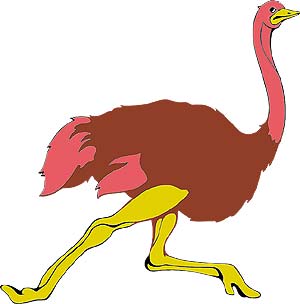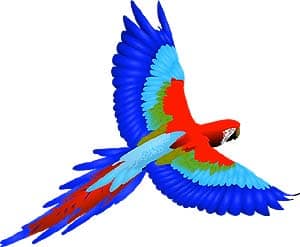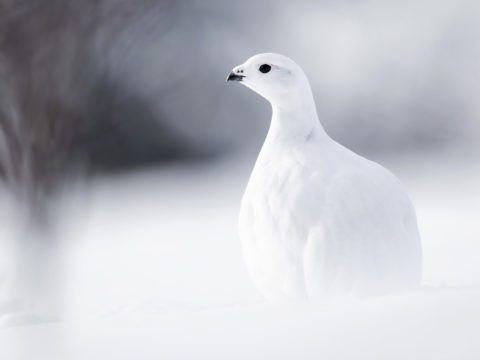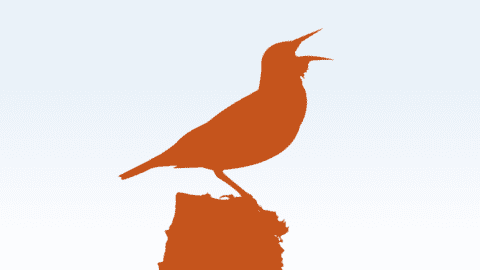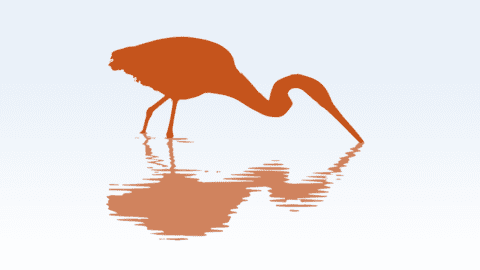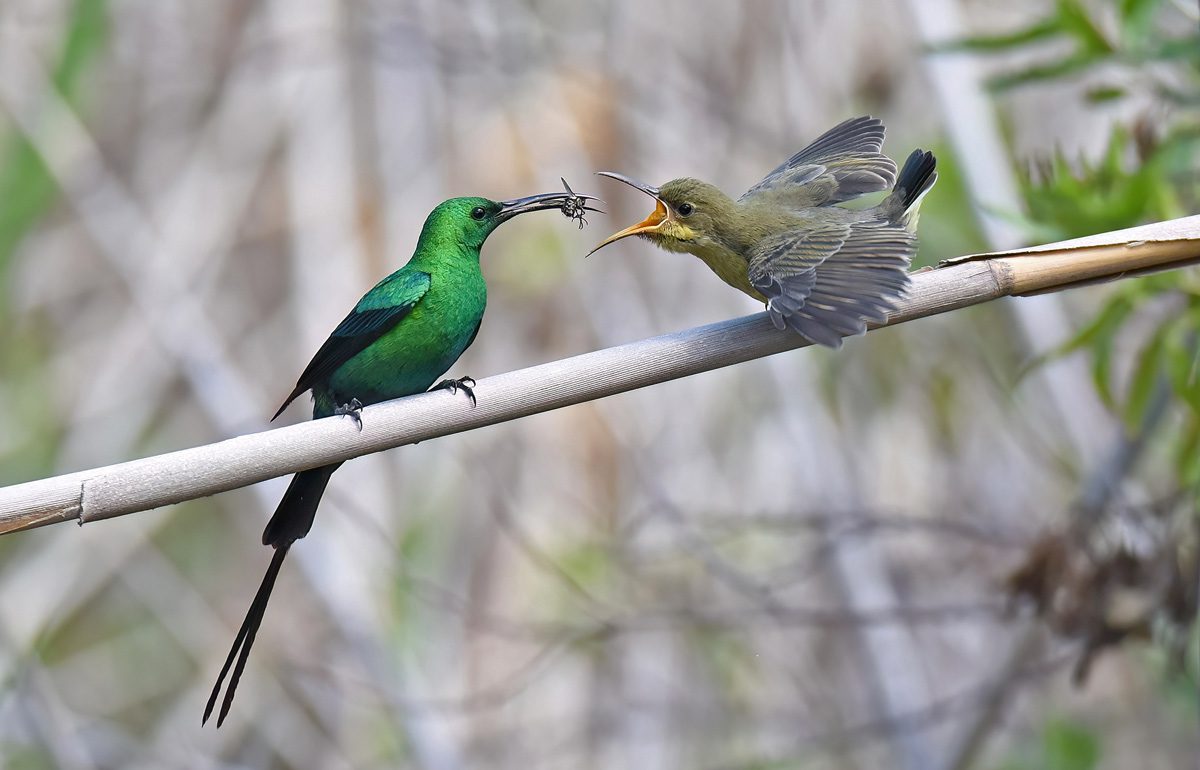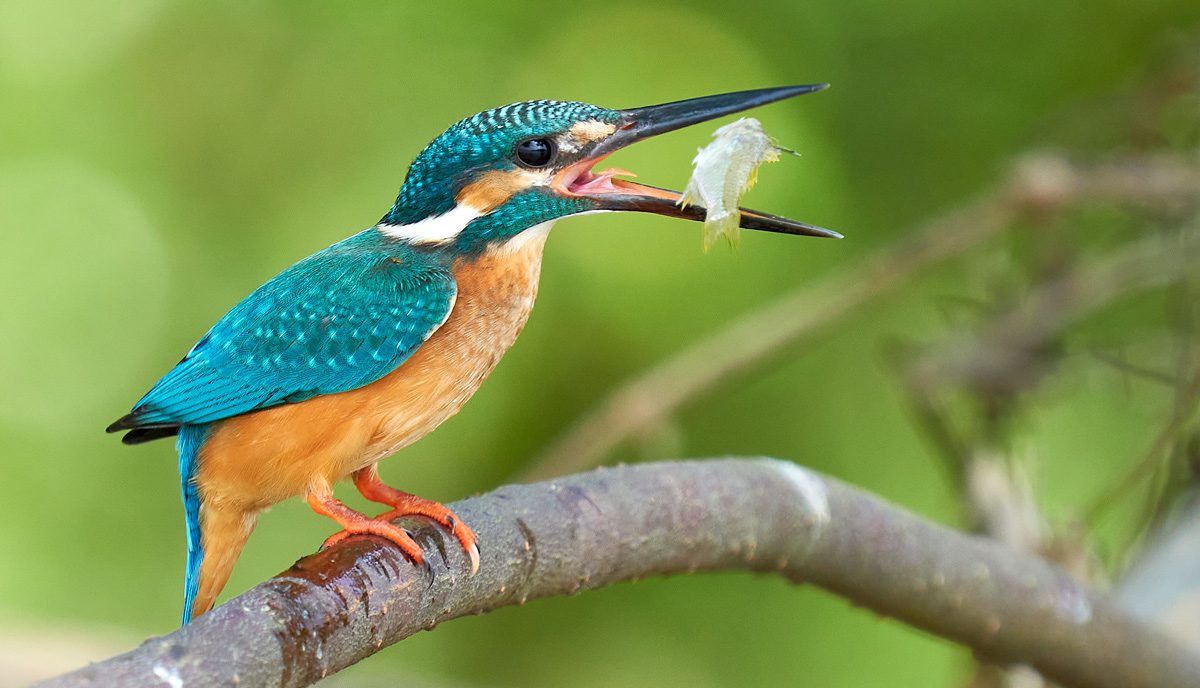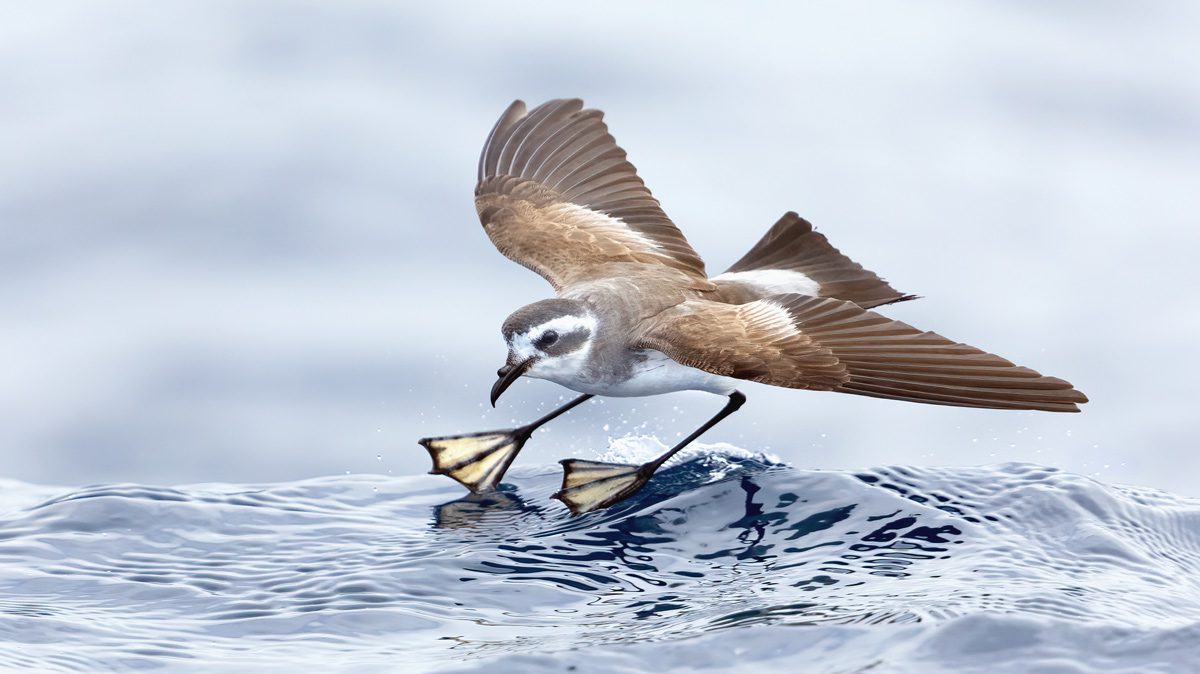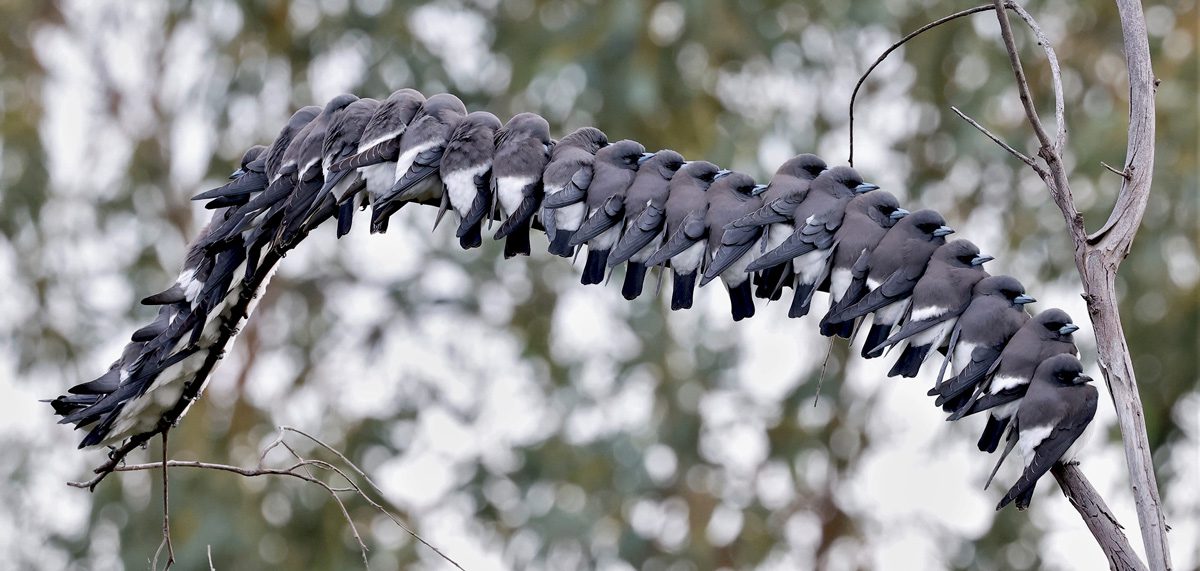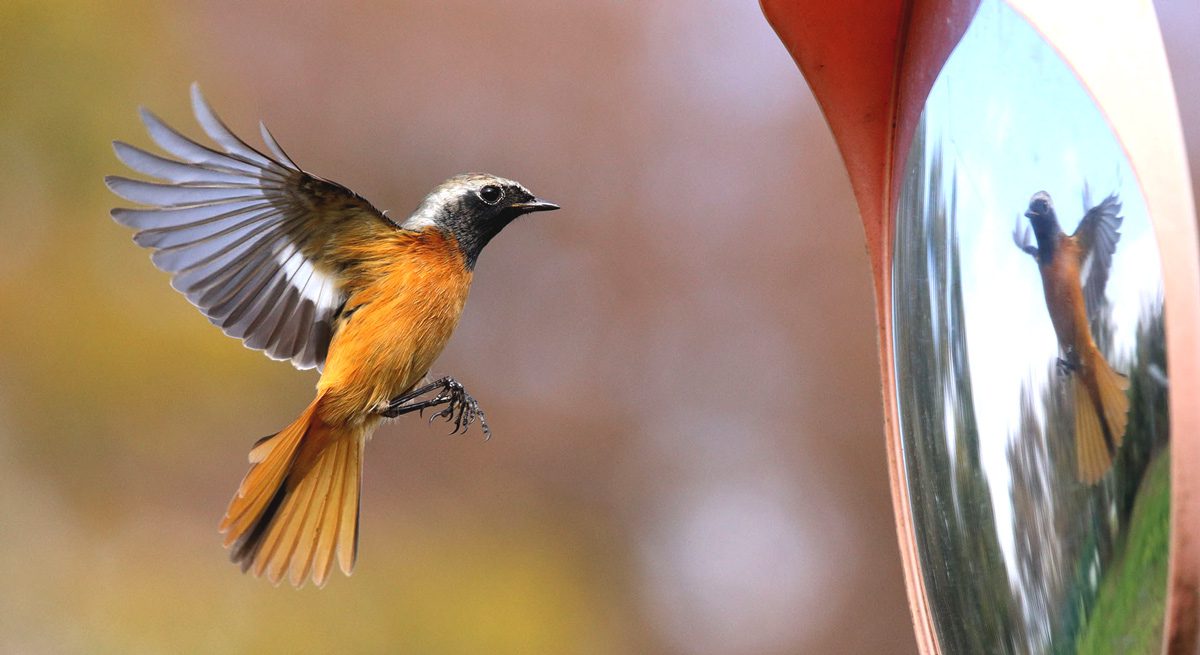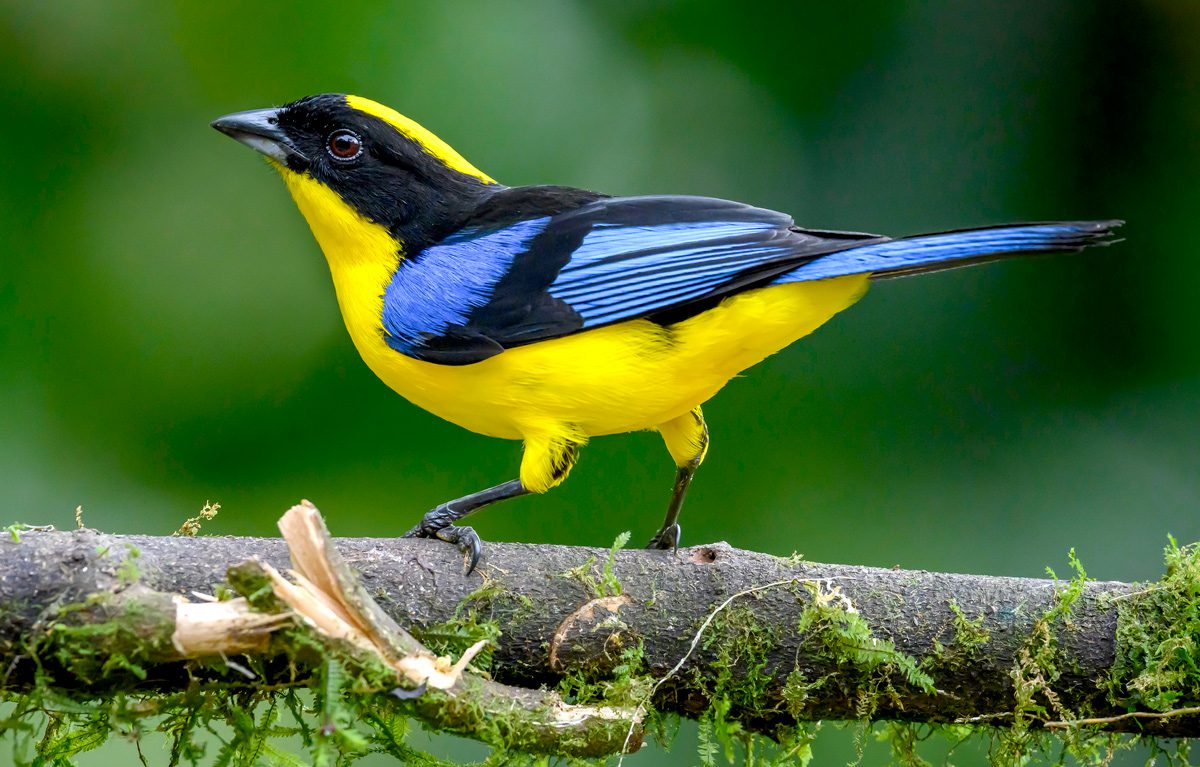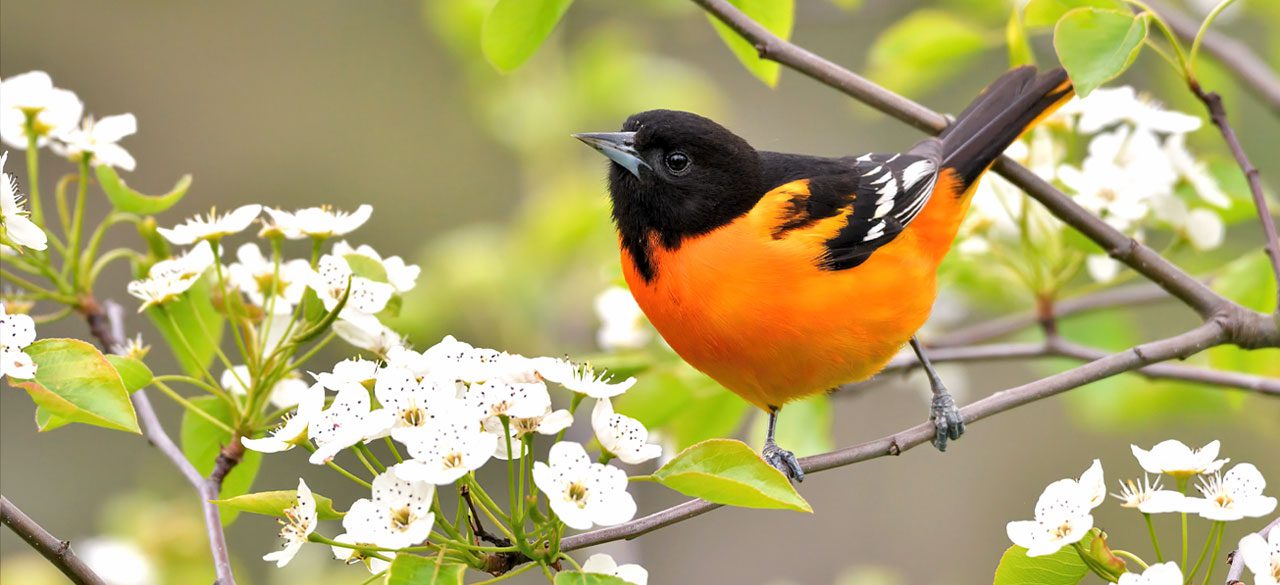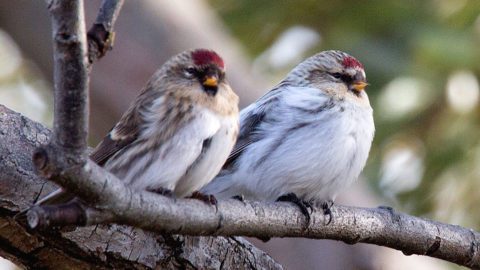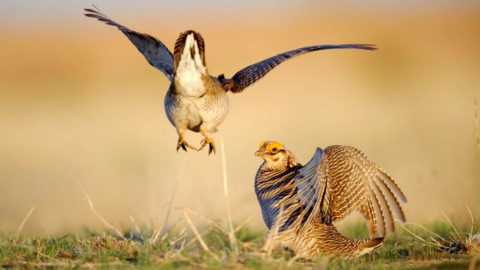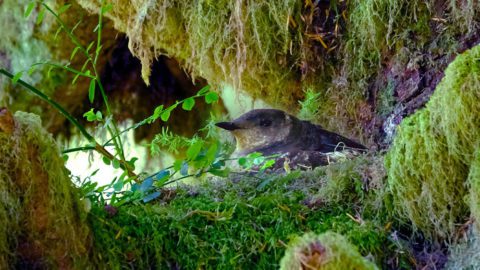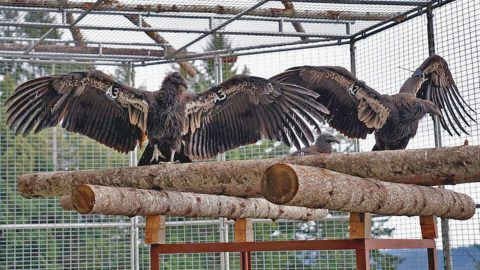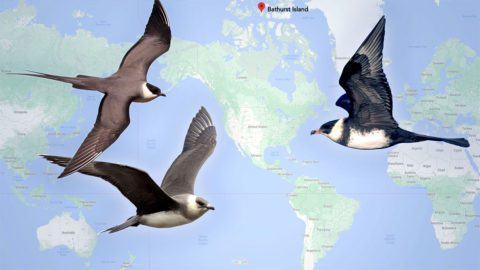Bird Pictures & Facts
Many can also run, jump, swim, and dive. Some, like penguins, have lost the ability to fly but retained their wings. Birds are found worldwide and in all habitats. The largest is the nine-foot-tall ostrich. The smallest is the two-inch-long bee hummingbird.
Everything about the anatomy of a bird reflects its ability to fly. The wings, for example, are shaped to create lift. The leading edge is thicker than the back edge, and they are covered in feathers that narrow to a point. Airplane wings are modeled after bird wings.
The bones and muscles of the wing are also highly specialized. The main bone, the humerus, which is similar to the upper arm of a mammal, is hollow instead of solid. It also connects to the bird’s air sac system, which, in turn, connects to its lungs. The powerful flight muscles of the shoulder attach to the keel, a special ridge of bone that runs down the center of the wide sternum, or breastbone. The tail feathers are used for steering.
Birds have a unique digestive system that allows them to eat when they can—usually on the fly—and digest later. They use their beaks to grab and swallow food. Even the way a bird reproduces is related to flight. Instead of carrying the extra weight of developing young inside their bodies, they lay eggs and incubate them in a nest.
The fossil record shows that birds evolved alongside the dinosaurs during the Jurassic period 160 million years ago. The best known fossil is archaeopteryx, which was about the size of a crow.
From the National Geographic book, Animal Encyclopedia, 2012
Источник
40 Different Types of Birds
Types of Birds: Birds are some of the most successful vertebrate animals on Earth. There are more than 9,000 bird species, and they are spread over the whole planet, from the poles to the equator.
Ornithology is the study of birds, and it comes under branches of zoology. The word ‘Ornithology’ is derived from 16th-century Latin word ornithologia meaning “bird science“.
Due to their ability to fly, birds have managed to occupy unique ecological niches, which helped them survive the demise of their close relatives – dinosaurs.
Let us explore the astounding kinds of birds in the class Aves!
Main Characteristics of Birds
The Class Aves or Birds is just one of the classes of the bigger Kingdom Animalia. The birds share some characteristics with another closely related class – Reptiles, but they also have some features that are unique to these fantastic creatures. Let us go through their main traits.
- Birds are vertebrates – they have an inner skeleton that contains a spine, limbs, and a skull;
- Birds are endothermic – they maintain constant body temperature by themselves, without depending on outside factors;
- Birds are bipedal (i.e., they move on two limbs when they are on the ground);
- The upper limbs of birds have evolved into specialized structures – wings, that allow flight;
- The body of the most bird is spindle-shaped (to make the flight more comfortable and more effective);
- The birds’ bones are hollow inside to lower the overall weight of the body;
- The birds have a beak instead of a mouth with teeth;
- The body is covered with unique structures – feathers. Only legs are covered with scales;
- The birds have a heart with 4 chambers – this way, the oxygen-rich and oxygen-poor blood is divided correctly, which helps with maintaining constant temperatures;
- The birds have a complex nervous system and a well-developed brain. Many birds are known to be highly teachable and intelligent;
- There are two sexes in birds: male and female;
- Fertilization in birds is internal. As a result of fertilization, a closed-off, waterproof egg is formed.
- The eggs develop outside the body, usually under the care of both parents or sometimes only one.
If we want to define birds strictly, we would say they are warm-blooded, bipedal vertebrate animals with forelimbs evolved into wings, covered in feathers, and with a beak instead of a mouth.
Источник
Macaulay Library’s Best Bird Photos 2023
Birders added more than 9 million photos to the Cornell Lab’s Macaulay Library in 2022 alone. From bee-eaters to Bat Falcons, kingfishers to cockatoos, and loons to lorikeets, here are some of our favorites.
Featuring more than 50 contributors
Birders added more than 9 million photos to the Cornell Lab’s Macaulay Library in 2022 alone. From bee-eaters to Bat Falcons, kingfishers to cockatoos, and loons to lorikeets, here are some of our favorites.
More From Living Bird
From the Winter 2023 issue of Living Bird magazine. Subscribe now. If you like this photo essay, you’ll also enjoy last year’s Best of Macaulay essay.
family Matters
The Macaulay Library holds the world’s biggest repository of bird photos, helping both scientists and birders better understand the breeding behaviors of birds, like how parents care for their young. South African birder Regard Van Dyk made such a discovery when he happened on an adult male Malachite Sunbird “foraging very acrobatically for anything it could catch.” Upon investigation, Van Dyk said he discovered a tiny juvenile sunbird perched in the reeds. “It all made sense,” he said. “The adult was … visiting every couple of seconds, feeding it, and flying off again to catch more food.”
On the Hunt
Getting a glimpse of birds foraging for food can help scientists better understand their life history, plus it’s just fascinating for birders to see how birds acquire what they eat. Action shots of catching prey always make for great bird photography. Even a Cattle Egret poking around in an urban vacant lot on the Canadian side of Niagara Falls can make for a compelling photo, when captured in the instant it grips a grasshopper in its beak.
Strike a Pose
Many photos in the Macaulay Library demonstrate the talent and patience of bird photographers who capture unique moments, from a Tropical Kingbird fiercely defending its perch from a House Finch to a White-faced Storm-Petrel delicately pattering its feet across ocean waters.
Multitudes
Macaulay Library photos of avian assemblages recall a past era, when bird abundance was a more common sight. Cornell Lab of Ornithology PhD student Bryce Robinson documented such an occurrence, when he joined a research expedition to Antarctica that passed by the St. Andrew’s Bay King Penguin colony. “This vast sea of penguins overloads the senses with endless black and white interspersed with orange and yellow,” he said. “I felt a responsibility to document this colony, to capture and share the depth of a wild marvel that we must never lose.”
Reflective Moments
Some photos in the Macaulay Library catch the moments when light bounces to create the magical effect of a reflected image, like a twinned Red-browed Firetail on the water’s surface along the Nepean River in Australia, or even a Daurian Redstart fooled into seeing a rival in a car’s side-view mirror near Tokyo. Spanish photographer Yeray Seminario spied the shimmering image of a Greater Flamingo in the salt pans of San Pedro del Pinatar. “The absence of wind, and the flat, highly saline water, builds a nice atmosphere for the image,” he says.
Online Favorites
It was tough choosing just a handful of images out of thousands submitted in 2022. Below are a few more of our favorites, and visit Macaulay Library to see even more great photo submissions from 2022 (and don’t miss audio recordings as well).
Thank You
Because of the tens of thousands of birders who share their audio, video, and photographic records with the Cornell Lab of Ornithology, the Macaulay Library is a global ornithology resource for the world. In the past year scientists have published more than 70 papers in research journals using Macaulay Library media assets, including a study relying upon photos from the archives that explained why Peregrine Falcons have black markings under their eyes (to reduce solar glare). The Macaulay Library couldn’t be what it is today without a dedicated global community to support it, including the contributors shown here whose photos were included in this year’s “Best of…” photo essay. And if you liked this photo essay, be sure to check out last year’s Best of Macaulay collection, too. From everyone at the Macaulay Library, thanks so much to all of the archives’ contributors for all you do, and we can’t wait to see what we do together in 2023.
Источник
Living Bird Spring 2022—Table Of Contents
A Deep Dive into the Oriole Genome Tackles the Mystery of Hybridization Using the latest genome-mapping technology, a team of Cornell Lab of Ornithology evolutionary biologists set out to settle a decades-long debate—are Baltimore and Bullock’s Orioles two species, or one? Five years later the team got their answer—and in doing so, unlocked a new set of questions.
By Rebecca Heisman
By Marc Devokaitis
Dancers of Spring: Displaying Grouse Are a Must-See Spectacle Lekking grouse put on stunning displays in spring. Our photo essay celebrates five of the best dancers—and we can help you plan your own bucket-list trip see these shows for yourself.
Story by Marc Devokaitis; Photos by Gerrit Vyn
Sounds Like Home: Experimenting with Audio to Help Marbled Murrelets Find Prime Habitat Endangered Marbled Murrelets are the latest in a line of species to show promising results from a conservation technique called social attraction.
By Carrie Arnold
Bringing Back Prey-go-neesh, the California Condor, to My Tribe’s Homeland This spring, California Condors will soar in the sky above Yurok tribal lands in Northern California for the first time in more than a century.
By Tiana Williams-Claussen
Tracking 3 Jaeger Species Across 4 Oceans—and Into a Comic Book Jaegers nest in the Arctic and then fan out across the open ocean to spend winters stealing food from other seabirds. But until scientists with miniature satellite trackers got involved (along with one gifted comic artist), nobody had any idea just how far the intrepid birds traveled.
Источник

